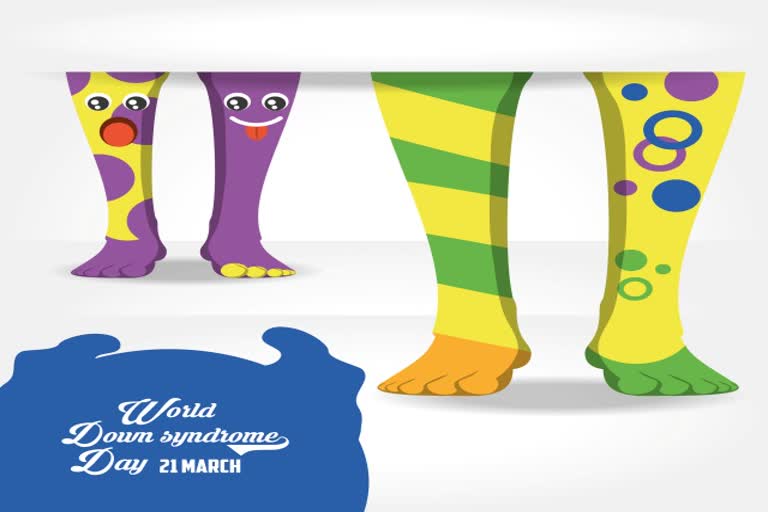Officially observed by the United Nations (UN) since 2012, World Down Syndrome Day (WDSD) is observed each year on 21tst March, aiming to spread global awareness about the same. The official website also mentions that the date for WDSD being the 21st day of the 3rd month was selected to signify the uniqueness of the triplication (trisomy) of the 21st chromosome which causes Down syndrome. The UN states that The estimated incidence of Down syndrome is between 1 in 1,000 to 1 in 1,100 live births worldwide. Each year, approximately 3,000 to 5,000 children are born with this chromosome disorder. But what exactly is it? Let us try to understand more about it with Dr. Veena Krishnan, consultant clinical Psychologist, Dehradun.
What Is Down Syndrome?
Dr. Krishnan explains that usually, humans have 23 pairs of chromosomes, which is a total of 46 chromosomes. However, those having down syndrome have an extra copy or third copy of chromosome 21, also known as trisomy 21, which totals up to 47 chromosomes in that person. This can lead to both physical as well as intellectual disabilities. People suffering from this syndrome look rather different and their learning process is affected.
What Are The Signs?
Some of the common physical characteristics in people with down syndrome, as stated by the Centers for Disease Control and Prevention (CDC), include:
- A flattened face, especially the bridge of the nose
- Almond-shaped eyes that slant up
- A short neck
- Small ears
- A tongue that tends to stick out of the mouth
- Tiny white spots on the iris (colored part) of the eye
- Small hands and feet
- A single line across the palm of the hand (palmar crease)
- Small pinky fingers that sometimes curve toward the thumb
- Poor muscle tone or loose joints
- Shorter in height as children and adults
Dr. Krishnan mentions that there are other health conditions and medical complications too which are usually associated with Down Syndrome like leukemia, poor vision, hearing loss, congenital heart defects, memory problems, obstructive sleep apnea, etc. They are also more prone to certain infections.
Types Of Down Syndrome
CDC explains that there are 3 types of down syndrome:
- Trisomy 21
About 95% of people with Down syndrome have Trisomy 21. With this type of Down syndrome, each cell in the body has 3 separate copies of chromosome 21 instead of the usual 2 copies.
- Translocation Down syndrome
This type accounts for a small percentage of people with Down syndrome (about 3%). This occurs when an extra part or a whole extra chromosome 21 is present, but it is attached or “trans-located” to a different chromosome rather than being a separate chromosome 21.
- Mosaic Down syndrome
This type affects about 2% of people with Down syndrome. Mosaic means mixture or combination. For children with mosaic Down syndrome, some of their cells have 3 copies of chromosome 21, but other cells have the typical two copies of chromosome 21. Children with mosaic Down syndrome may have the same features as other children with Down syndrome. However, they may have fewer features of the condition due to the presence of some (or many) cells with a typical number of chromosomes.
Who Is At Risk?
Our expert says that the main risk factor of down syndrome in a baby is his/her mother’s age. Women who get pregnant over the age of 35 years are at a higher risk of giving birth to a baby with down syndrome as compared to those younger than 35 years. A family history of the down syndrome can also be a risk factor.
Therefore, an amniocentesis test is a must when a woman is pregnant. Other prenatal tests may include Chorionic villus sampling (CVS) and Percutaneous umbilical blood sampling (PUBS, or cordocentesis). After this, when a baby is born, a physical examination and a blood test called Karyotype may help confirm the cause of down syndrome.
Can It Be Treated?
Down syndrome is a lifelong condition and has no curative treatment. However, its symptoms can be managed. Dr. Krishnan says that early intervention can help a baby improve his/her physical as well as intellectual abilities, along with improving sensory skills, social skills, daily living skills, and motor skills. Regular health check-ups and monitoring by health professionals are also important.
People with down syndrome may look different but can live a normal life too. They have all the rights as those of other people and we just need to be kind to them and not look at them any differently. There are many success stories over the internet of people suffering from down syndrome. With some medical assistance and support from society, their lives can be cheerful as well.



